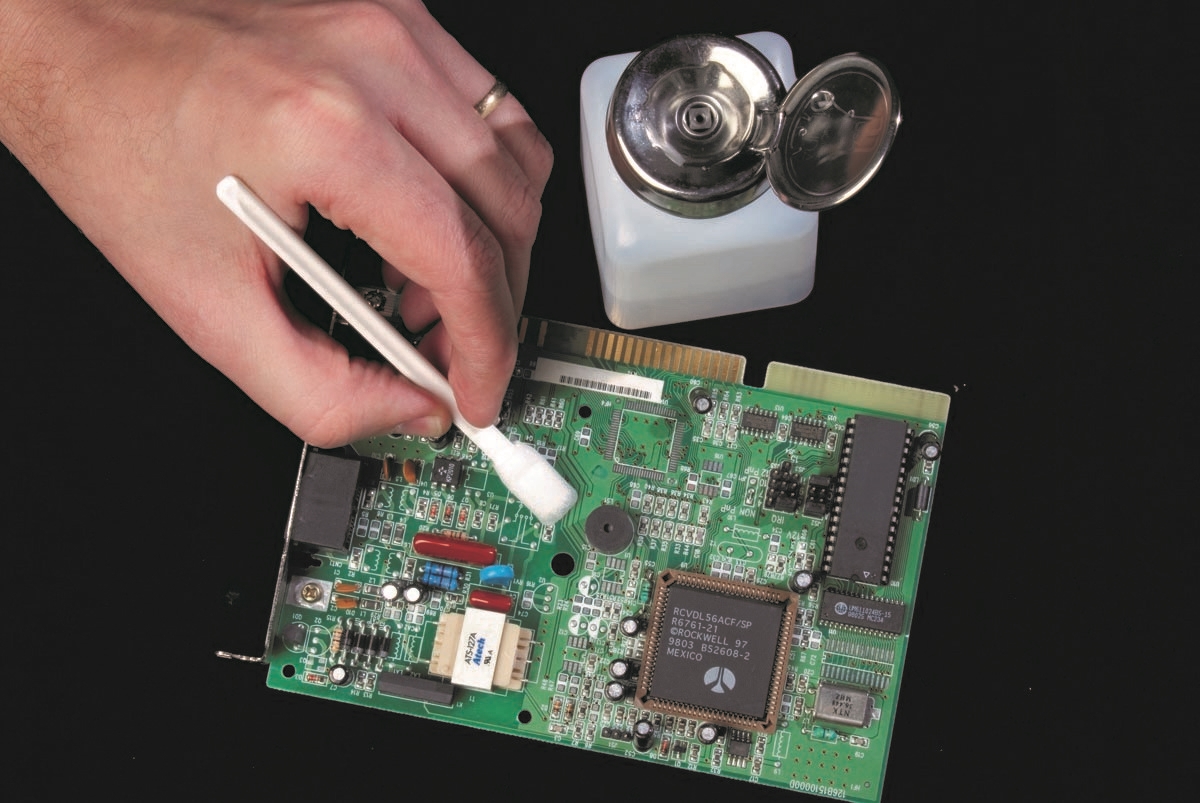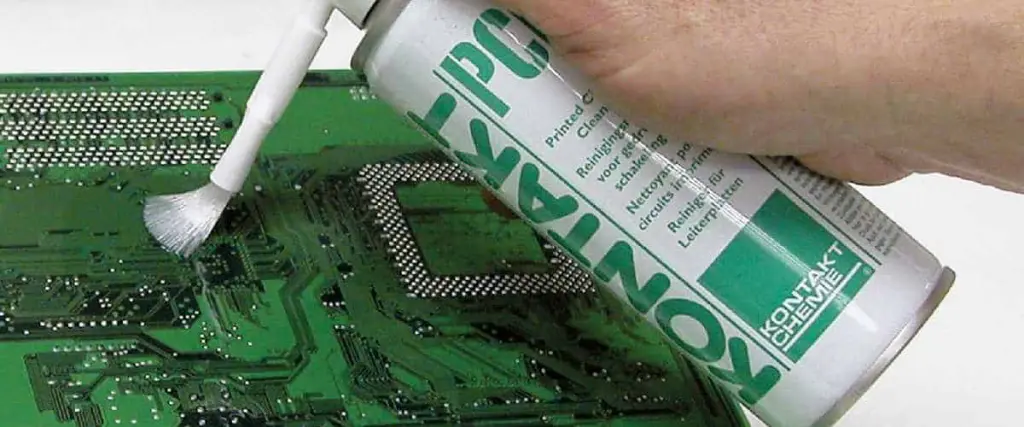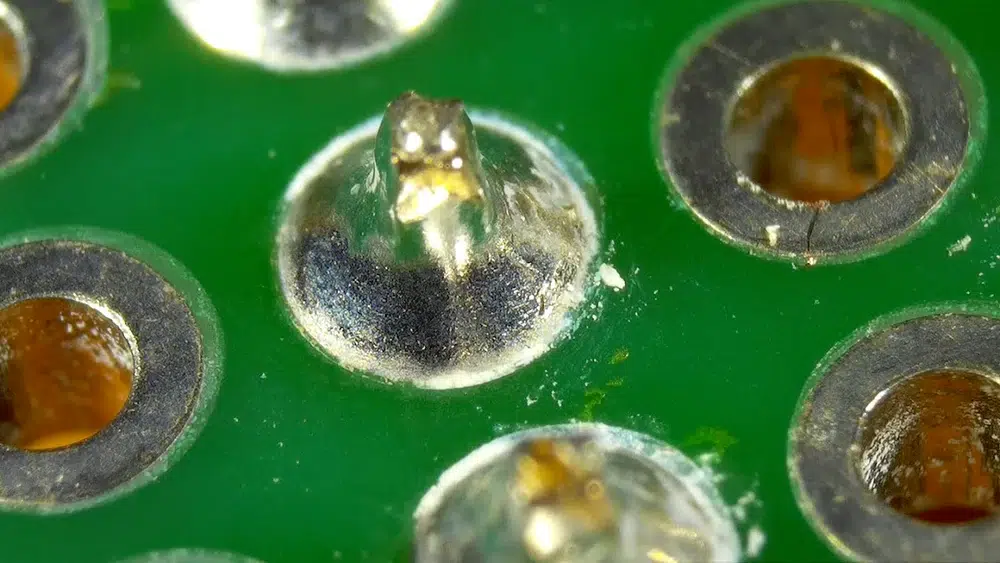Are you looking for effective alternatives to isopropyl alcohol (IPA) for cleaning surface mount technology (SMT) assemblies? While IPA has long been a go-to solvent for PCB cleaning, there are advanced solvents that can offer better performance, safety, and environmental benefits for tasks like no-clean flux removal and cleaning electronic components. In this post, we’ll explore the best SMT assembly cleaning solvents, alternatives to IPA for PCB cleaning, and top options for tackling stubborn residues. Let’s dive into the details to help you choose the right solvent for your next project.
Why Move Beyond IPA for SMT Assembly Cleaning?
Isopropyl alcohol, or IPA, is widely used in electronics cleaning due to its availability, low cost, and decent solvency for light residues. However, it has limitations. IPA can struggle with stubborn no-clean flux residues, may leave behind moisture if not fully evaporated, and poses flammability risks in high-volume production environments. Additionally, during shortages (like those seen during the COVID-19 pandemic), finding IPA can become a challenge, pushing engineers to seek reliable alternatives.
For electrical engineers working on SMT assembly, finding the right cleaning solvent is critical to ensure the reliability and longevity of printed circuit boards (PCBs). Residues from flux or contaminants can lead to issues like corrosion, electrical leakage, or dendritic growth, which can cause circuit failures over time. That’s why exploring advanced solvents tailored for SMT assembly cleaning is worth the effort. Let’s look at why alternatives are gaining traction and what makes them effective.

Challenges with IPA in PCB Cleaning
Before we explore alternatives, it’s important to understand the specific challenges IPA presents in SMT assembly cleaning:
- Limited Solvency: IPA often struggles to dissolve tough no-clean flux residues, which are designed to remain on the board without cleaning. These residues can require more aggressive solvents for complete removal.
- Evaporation Issues: If not properly dried, IPA can leave moisture trapped under components, potentially leading to short circuits or corrosion.
- Safety Concerns: With a low flash point of 12°C (53°F), IPA is highly flammable, posing risks in environments with high heat or sparks.
- Environmental Impact: While IPA is less toxic than some solvents, it still contributes to volatile organic compound (VOC) emissions, which are regulated in many regions.
These challenges highlight the need for SMT assembly cleaning solvents that can address specific residues like no-clean flux while meeting safety and environmental standards.
Key Criteria for Choosing SMT Assembly Cleaning Solvents
When selecting an alternative to IPA for PCB cleaning, electrical engineers should consider several factors to ensure compatibility with their processes and components. Here are the key criteria:
- Solvency Power: The solvent must effectively dissolve flux residues, solder paste, and other contaminants without damaging delicate components or board materials.
- Non-Conductivity: It should be non-conductive to prevent short circuits during or after cleaning.
- Evaporation Rate: A fast evaporation rate minimizes the risk of moisture retention, ideally leaving no residue behind.
- Safety Profile: Low toxicity and higher flash points reduce health and fire hazards in the workplace.
- Environmental Compliance: Solvents with low VOC content or those that meet regulations like REACH or RoHS are preferred in modern manufacturing.
- Compatibility: The solvent must be safe for use with the materials on the PCB, including plastics, coatings, and soldermask.
With these criteria in mind, let’s explore some of the best solvents for no-clean flux removal and cleaning electronic components.
Top Alternatives to IPA for PCB Cleaning in SMT Assembly
Below, we’ve compiled a list of advanced cleaning solvents that outperform IPA in various SMT assembly applications. These alternatives are chosen based on their effectiveness, safety, and industry adoption.
1. Hydrofluoroethers (HFEs)
Hydrofluoroethers, such as 3M Novec fluids, are engineered solvents designed specifically for precision cleaning of electronic components. They are non-flammable, have low toxicity, and offer excellent solvency for flux residues.
- Benefits: HFEs evaporate quickly, leaving no residue. They are non-conductive and safe for use on live circuits. Their flash point is typically above 60°C (140°F), far safer than IPA.
- Applications: Ideal for vapor degreasing and ultrasonic cleaning of PCBs with no-clean flux residues.
- Drawbacks: Higher cost compared to IPA, often ranging from $50–$100 per liter depending on the formulation.
- Use Case: In high-reliability applications like aerospace or medical devices, where residue-free cleaning is non-negotiable, HFEs are a top choice.
2. Acetone-Based Blends
Acetone, when blended with other solvents, can be a powerful alternative for PCB cleaning. It’s highly effective at dissolving organic residues like flux but must be used cautiously due to its aggressiveness.
- Benefits: Fast evaporation and strong solvency for tough residues. Often more affordable than specialized solvents, with costs around $10–$20 per liter.
- Applications: Best for manual cleaning with a brush or swab on non-sensitive components.
- Drawbacks: Can damage plastics and coatings on PCBs. Flammable with a flash point of -20°C (-4°F). Not suitable for immersion or ultrasonic cleaning.
- Use Case: Useful for spot cleaning in rework stations where flux buildup is heavy on specific areas.

3. Water-Based Cleaners with Surfactants
Water-based cleaners, often combined with surfactants, are an eco-friendly alternative to solvent-based cleaning. They are formulated to remove flux residues without the risks associated with flammable solvents.
- Benefits: Non-flammable, low VOC, and safe for most PCB materials. Cost-effective, often under $15 per liter for concentrated solutions.
- Applications: Used in spray or immersion cleaning systems, often followed by a rinse and drying step.
- Drawbacks: Requires thorough drying to prevent moisture entrapment. Less effective on heavy, baked-on residues compared to solvents.
- Use Case: Suitable for high-volume SMT assembly lines where environmental compliance is a priority.
4. Terpene-Based Solvents
Derived from natural sources like citrus peels, terpene-based solvents offer a biodegradable alternative to traditional chemicals. They are effective at dissolving organic residues like rosin flux.
- Benefits: Environmentally friendly with low toxicity. Moderate cost, typically $20–$40 per liter.
- Applications: Works well in manual or automated cleaning for light to medium flux residues.
- Drawbacks: Slower evaporation rate than IPA or HFEs, and may leave a slight residue if not rinsed properly.
- Use Case: A good choice for labs or small-scale operations focused on sustainability.
5. Specialized Flux Removers (e.g., Chemtronics Flux-Off)
Commercial flux removers like Chemtronics Flux-Off are formulated specifically for electronics cleaning. They often come in aerosol cans with brush attachments for precise application.
- Benefits: Tailored for no-clean flux removal with minimal risk to components. Non-conductive and fast-drying.
- Applications: Ideal for spot cleaning or rework of SMT assemblies.
- Drawbacks: Expensive for large-scale use, with costs around $10–$15 per 12 oz. can. Not practical for immersion cleaning.
- Use Case: Perfect for engineers performing repairs or touch-ups on individual boards.
Best Solvents for No-Clean Flux Removal
No-clean flux is designed to be left on the PCB after soldering, but in some cases, removal is necessary to prevent long-term reliability issues, especially in humid environments where residues can absorb moisture and cause electrical leakage. Here are the best solvents for no-clean flux removal:
- Hydrofluoroethers (HFEs): Their strong solvency and fast evaporation make them highly effective for no-clean flux, even under tight components. Tests show HFEs can reduce ionic contamination to below 1.56 μg/cm2, meeting stringent industry standards like IPC-TM-650.
- Specialized Flux Removers: Products like Flux-Off are formulated to target no-clean residues without aggressive chemicals, ensuring component safety.
- Water-Based Cleaners: With the right surfactant and cleaning process (e.g., heated spray at 40–60°C), these can tackle no-clean flux effectively, though drying is critical.

Cleaning Electronic Components: Best Practices
Cleaning electronic components during or after SMT assembly requires precision to avoid damage. Here are some best practices to follow, regardless of the solvent you choose:
- Use the Right Tools: Soft brushes, swabs, or ultrasonic cleaners can help apply solvents without scratching or stressing components.
- Test Compatibility: Always test a small area of the PCB or component with the solvent to ensure it won’t degrade materials. For instance, acetone can dissolve certain plastics used in connectors.
- Control Application: For manual cleaning, apply solvents sparingly to avoid pooling under components. Use compressed air or a hot air gun (at low settings, around 50–60°C) to aid drying.
- Follow Safety Protocols: Wear gloves, safety glasses, and ensure proper ventilation, especially with flammable or high-VOC solvents.
- Measure Results: Use ionic contamination testers to verify cleanliness levels post-cleaning. Aim for values below 1.56 μg/cm2 of NaCl equivalent for high-reliability applications.
Comparing Cleaning Methods for SMT Assembly
The solvent you choose often depends on the cleaning method used in your facility. Here’s a quick comparison of common methods and compatible solvents:
| Method | Best Solvents | Pros | Cons |
|---|---|---|---|
| Manual Cleaning | IPA, Acetone Blends, Flux Removers | Precise, low cost | Time-consuming, inconsistent results |
| Ultrasonic Cleaning | HFEs, Water-Based Cleaners | Thorough, reaches under components | Requires drying, risk of component damage if not tuned properly |
| Vapor Degreasing | HFEs, Terpene-Based Solvents | Fast, residue-free | Expensive equipment, solvent recovery needed |
Environmental and Regulatory Considerations
As environmental regulations tighten, choosing SMT assembly cleaning solvents that comply with standards like REACH (Registration, Evaluation, Authorization, and Restriction of Chemicals) or California’s SCAQMD (South Coast Air Quality Management District) is essential. Solvents like HFEs and water-based cleaners often have lower VOC content (e.g., HFEs can have VOC levels under 50 g/L compared to IPA’s 786 g/L), making them better choices for sustainable manufacturing.
Additionally, consider waste disposal. Solvents like acetone or IPA require hazardous waste handling, while some water-based cleaners can be disposed of more easily if they meet local guidelines. Always check with your facility’s environmental team to ensure compliance.
Conclusion: Finding the Right Solvent for Your SMT Assembly Needs
Moving beyond IPA for SMT assembly cleaning opens up a world of advanced solvents that can improve performance, safety, and environmental impact. Whether you’re dealing with stubborn no-clean flux residues or need a reliable solution for cleaning electronic components, options like hydrofluoroethers, water-based cleaners, and specialized flux removers offer tailored benefits for different applications.
For electrical engineers, the key is to match the solvent to your specific process, budget, and regulatory requirements. Test different alternatives in small batches before full-scale adoption, and always prioritize cleanliness levels that meet industry standards (e.g., ionic contamination below 1.56 μg/cm2). By upgrading your cleaning approach, you can enhance the reliability of your PCBs and ensure long-term performance in even the most demanding environments.
 ALLPCB
ALLPCB







